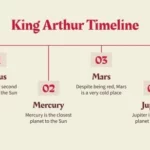The digital landscape is littered with the remnants of once-thriving social media platforms. Before the curated feeds and targeted ads of today’s giants, a diverse ecosystem of online communities flourished, each vying for user attention. Exploring the rise and fall of these platforms reveals invaluable lessons about the ever-evolving nature of technology and the critical importance of adaptation.
MySpace: From King of Customization to Digital Ghost Town
MySpace, a name synonymous with the early 2000s internet culture, offered unparalleled customization. Users could personalize their profiles with unique backgrounds, music, and elaborate HTML layouts. This freedom of expression fostered a vibrant community of artists, musicians, and individuals eager to carve out their digital identity. However, this very strength ultimately contributed to MySpace’s downfall. A poorly received redesign alienated its core user base, stripping away the familiar customization options and replacing them with a more generic, less personal experience. Simultaneously, the rise of mobile internet access exposed MySpace’s weakness: a clunky and unintuitive mobile experience. While competitors like Facebook embraced the mobile revolution, MySpace lagged behind, failing to capture the growing number of users accessing social media on their phones.
Friendster: The Pioneer That Lost Its Way
Friendster, the true pioneer of social networking, laid the foundation for modern platforms. It introduced the concept of online profiles, friend connections, and community building, features that are now ubiquitous. However, Friendster’s early success was hampered by technical difficulties. The platform struggled to handle its rapidly growing user base, resulting in slow loading times, frequent crashes, and an overall frustrating user experience. This created an opening for competitors like Facebook, who offered a more stable and reliable platform. Friendster’s inability to scale its technology and adapt to the increasing demands of its users ultimately led to its decline.
Orkut: Finding a Niche, but Failing to Expand
Orkut, while not as widely known as MySpace or Friendster, carved out a loyal following in specific regions, particularly Brazil and India. It fostered strong online communities and offered innovative features for its time. However, Orkut’s localized success proved to be a double-edged sword. Its inability to expand its reach beyond these niche markets limited its growth potential. Furthermore, Orkut failed to keep pace with the rapid innovation of its competitors, particularly Facebook, which continuously rolled out new features and improvements. While Orkut offered a sense of community, Facebook’s broader appeal and constant evolution ultimately attracted a larger global audience.
Deconstructing the Downfall: Common Threads of Failure
Analyzing the demise of these platforms reveals common threads that offer valuable lessons for today’s tech companies:
Scalability and Performance: A platform’s ability to handle a growing user base without performance issues is crucial. Friendster’s struggles with slow loading times and frequent crashes highlight the importance of robust and scalable technology.
User Experience: A clean, intuitive, and user-friendly interface is essential for attracting and retaining users. MySpace’s confusing redesign and Orkut’s outdated interface drove users to competitors offering a more streamlined experience.
Mobile Optimization: As mobile internet access became increasingly prevalent, platforms that failed to prioritize mobile optimization lost ground to competitors. MySpace’s clunky mobile experience exemplifies this critical oversight.
Continuous Innovation: In the rapidly evolving digital landscape, platforms must constantly innovate to stay ahead of the curve. Orkut’s failure to introduce new features and improve existing ones allowed competitors to offer more engaging and dynamic experiences.
Adaptability and Market Expansion: The ability to adapt to changing user preferences and expand into new markets is essential for long-term success. Orkut’s limited global reach and inability to adapt to the evolving social media landscape contributed to its decline.
The Legacy of Lost Platforms: Shaping the Future of Social Media
The rise and fall of these early social media platforms offer invaluable insights for the tech industry. They underscore the importance of prioritizing user experience, investing in robust technology, embracing mobile optimization, and continuously innovating. These lessons are crucial not only for social media platforms but for any tech company seeking to thrive in the dynamic digital landscape. The ghosts of social media past serve as a constant reminder that adaptation and innovation are not merely desirable traits—they are essential for survival.
- Red Cloud, NE: Discover Willa Cather’s Legacy - April 11, 2025
- Remember Old Social Media Sites? Their Rise and Fall - April 11, 2025
- How many days till Feb 3?Accurate Countdowns & Tools - April 11, 2025
















